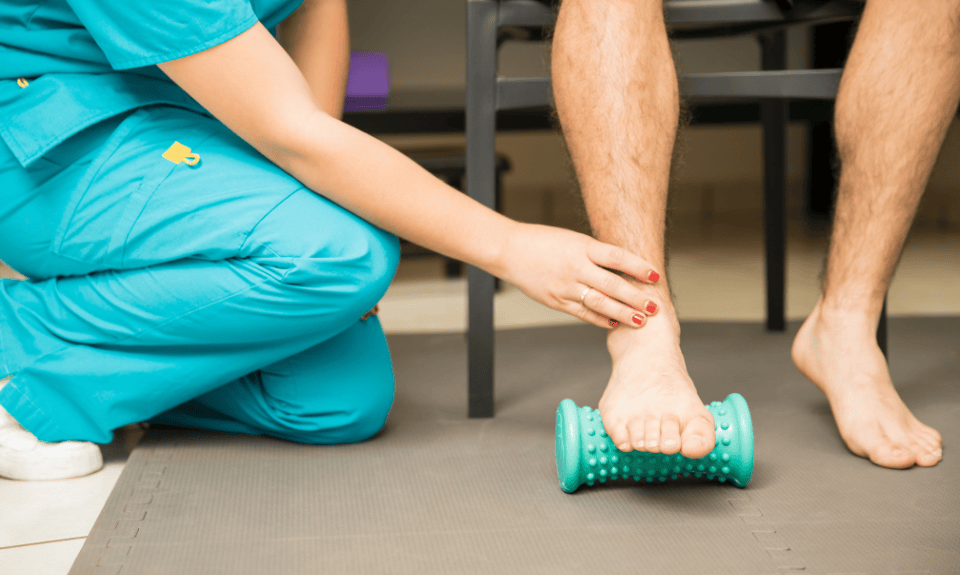Plantar fasciitis is one of the common conditions contributing in heel pain. It includes irritation of the plantar fascia — a tough, fibrous band of tissue that runs along the bottom of the foot. The plantar fascia attaches to the heel bone (calcaneus) and to the bottom of the feet. It supports the foot arch and has an essential role in everyday foot mechanics.
Tension or pressure inside the plantar fascia increases whilst you bear. The tension additionally will increase when you push off at the ball of the foot and toes. With overuse or in time, the fascia loses some of its elasticity and can become irritated with every day activities.
RISK FACTORS:
In most of cases, plantar fasciitis develops without a specific, identifiable reason. There are many factors which can contribute to the irritation of the fascia:
- New or sudden increase in activity.
- Repetitive impact activity (running/dancing/sports activities)
- Prolonged standing on hard surfaces (particularly amongst nurses, factory workers, and teachers)
- Anatomy (flat feet or a high arch)
- Tightened calf muscles
- Excess body weight
- Age (plantar fasciitis is most common among patients over 30
When you come out of the bed in morning and feel pain at the bottom of your heel with your first few steps, you need to know what will be the cause. Even if it finally ends up going away later in the day, it is still bothersome. You would possibly suppose it is plantar fasciitis based totally on your symptoms, however…Could or not it’s a heel spur?
The Basics —
Heel spurs and plantar fasciitis signs and symptoms are often confused for each other, but in most cases the heel spur itself does not cause the pain. Plantar fasciitis is.
Plantar fasciitis is an inflammation of the plantar fascia and is the most common cause of heel pain. A heel spur is a type of bone spur, or calcium deposit that develops on the calcaneus, or heel bone.
Some risk factors for developing plantar fasciitis and heel spurs consist of tight calf muscles, increased weight, flat feet, high arches, abnormal walking patterns, and improper shoe gear.
Both heel spurs and plantar fasciitis can normally be treated successfully with non-surgical treatments such as arch supported insoles and injections.
WHAT’S THE DIFFERENCE BETWEEN HEEL SPUR PAIN AND PLANTAR FASCIITIS PAIN?
There are some misconceptions about how plantar fasciitis and heel spurs are connected. People tend think that heel spurs are most common cause of heel pain but generally this is not the case.
A heel spur is a form of bone spur, or new bone growth that develops at the back of the heel bone. This is where the plantar fascia inserts. These small, jagged bumps of bone that usually develop due to repetitive trauma—or damage—to the heel.
In fact, approximately 10% of the population have heel with the majority being completely asymptomatic. Only about 5% of people with heel spurs have actual pain from the spur. The actual reason for heel pain in most people, as you may have guessed, is plantar fasciitis.


